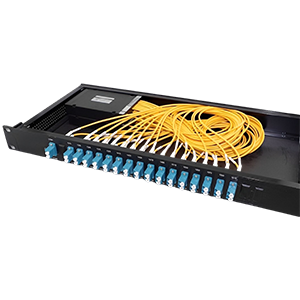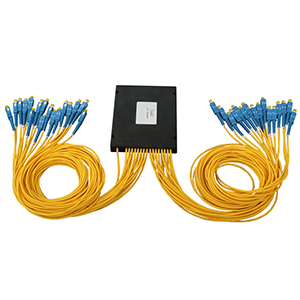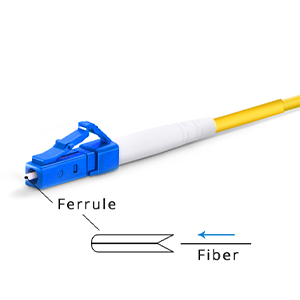I will delve into the working principles, application areas and advantages of Dense Wavelength Division Multiplexing (DWDM). If you are interested in high-capacity optical signal multiplexing technology, this article will demystify DWDM for you and help you understand why it is so important and valuable.
With the rapid development of information technology, the demand for high-bandwidth transmission and large-capacity networks continues to increase. As an important optical transmission technology, DWDM effectively meets these needs by simultaneously transmitting multiple optical signals of different wavelengths to transmit data in optical fibers.
Basic principles of DWDM
DWDM (Dense Wavelength Division Multiplexing) is an optical transmission technology that achieves high-capacity optical signal multiplexing by transmitting densely arranged narrow-wavelength signals in optical fibers. The basic principles of DWDM will be explained below and the importance of wavelength spacing, wavelength accuracy and wavelength stability in DWDM will be discussed.
Basic principles of DWDM:
DWDM uses the wavelength separation characteristics of light to transmit multiple optical signals of different wavelengths in the same optical fiber at the same time. It can transmit dozens or even hundreds of optical signals of different wavelengths at the same time, and each wavelength corresponds to an independent optical channel. By densely arranging these narrow wavelength signals in optical fibers, DWDM enables high-capacity optical signal multiplexing.
In the DWDM system, each wavelength corresponds to a frequency of light, and the unit usually used is nanometers (nm). These wavelengths are usually arranged in wavelength intervals, which is the distance between adjacent wavelengths. The standard DWDM wavelength spacing is 0.8 nanometers (or 100 GHz spacing), but denser spacing also exists, such as 0.4 nanometers (or 50 GHz spacing).
The importance of wavelength spacing, wavelength accuracy and wavelength stability:
-
Wavelength spacing: The wavelength spacing determines the distance between different wavelengths, and its selection is crucial to the performance and compatibility of the DWDM system. Smaller wavelength spacing allows more wavelength signals to be multiplexed within a limited spectral range, thereby increasing system capacity. At the same time, smaller wavelength intervals can also provide greater flexibility to adapt to different network needs.
-
Wavelength accuracy: Wavelength accuracy refers to the accuracy of each wavelength signal, that is, its deviation from the set wavelength. The higher the wavelength accuracy, the better the stability and accuracy of the wavelength signal. In a DWDM system, the level of wavelength accuracy directly affects signal interoperability and multiplexing efficiency. Higher wavelength accuracy can reduce interference between wavelengths and improve system reliability and performance.
-
Wavelength stability: Wavelength stability refers to the stability of the wavelength signal under changes in time and temperature. During transmission in optical fiber, temperature and other environmental factors can cause wavelength signals to drift. Therefore, wavelength stability is crucial to the long-term stability and reliability of DWDM systems. Better wavelength stability can reduce interference caused by wavelength drift and ensure correct transmission and analysis of signals.
To sum up, wavelength spacing, wavelength accuracy and wavelength stability are key parameters in DWDM systems. Properly selecting the wavelength spacing and ensuring wavelength accuracy and wavelength stability can effectively improve the capacity, performance and reliability of the DWDM system and meet the needs of high-capacity optical transmission.
Key components of DWDM system
The DWDM system includes multiple key components. Two of the main components will be introduced below: optical transmission equipment and optical fibers, and their importance and characteristics in the DWDM system will be explained.
- Optical transmission equipment:
- Optical amplifier: In the DWDM system, the optical signal will experience signal attenuation during the transmission process, and the optical amplifier is used to enhance the intensity of the optical signal. Commonly used optical amplifiers include Erbium-Doped Fiber Amplifier (EDFA) and Raman amplifiers.
- Wavelength division multiplexer (MUX): A wavelength division multiplexer is used to combine multiple optical signals of different wavelengths to form a composite optical signal stream for simultaneous transmission in optical fibers. It distributes optical signals of different wavelengths to different channels.
- Wavelength decomposition multiplexer (DEMUX): The wavelength decomposition multiplexer is used to decompose the composite optical signal stream into independent wavelength signals for analysis and processing at the receiving end.
- Optical filter: Optical filter is used to select specific wavelength signals or filter out unwanted wavelength signals to improve system performance and reduce interference.
These optical transmission devices play a key role in the DWDM system. They work together to realize the transmission and multiplexing of multi-wavelength optical signals, improving the capacity and efficiency of the system.
- Fiber optic:
Optical fiber is the transmission medium in the DWDM system. It has the following importance and characteristics:
- High-bandwidth transmission: Optical fiber has a large frequency bandwidth and can support high-speed data transmission and large-capacity optical signal transmission. This enables DWDM systems to meet growing communication needs.
- Low loss: The transmission loss of optical fiber is relatively low, which can maintain the strength and quality of the signal during long-distance transmission. This is very critical for signal transmission and coverage of DWDM systems.
- Low interference: Optical fiber has good electromagnetic shielding performance, which can reduce the impact of external electromagnetic interference on signals. This helps improve the anti-interference capability and transmission quality of the DWDM system.
- High reliability: The material and structure of optical fiber determine its high stability and reliability. It has good adaptability to external environmental factors such as temperature changes, humidity, and mechanical shock, and can ensure the long-term stable operation of the DWDM system.
Optical fiber, as the transmission medium in the DWDM system, has an important impact on the performance, capacity and reliability of the system. High-quality optical fiber can ensure the quality and reliability of signal transmission, but also has an impact on the cost and maintenance of the system. Therefore, selecting the appropriate optical fiber is crucial in DWDM system design and deployment.
Application fields of DWDM
DWDM (Dense Wavelength Division Multiplexing) technology plays an important role in multiple application fields. The following are the three main application areas of DWDM:
Optical communication:
-
Long-distance transmission: DWDM technology achieves high-capacity long-distance optical signal transmission by multiplexing multiple wavelengths in optical fibers. It allows the transmission of tens to hundreds of independent optical channels on a single optical fiber, greatly improving transmission capacity and efficiency. This is very important in long-distance communications across continents, across oceans, etc.
-
Cross-continental communication: DWDM technology is widely used in cross-continental communication systems. By establishing DWDM optical fiber networks between different geographical locations, high-speed and large-capacity data transmission can be achieved. DWDM technology makes cross-continental communications more efficient and reliable, and meets the growing needs of international communications.
-
Optical network: DWDM is used to build an optical network, in which multiple optical transmission nodes are connected to each other through optical fibers to form a high-capacity optical communication network. The network can support large-scale data transmission, video streaming, cloud computing and other applications to meet the high bandwidth requirements of modern communication needs.
-
Data center interconnection:
Data center interconnection connects multiple data centers together to achieve high-speed transmission and sharing of data, applications and services. DWDM plays a key role in data center interconnection:
-
High-capacity transmission: DWDM technology provides high-capacity optical transmission, allowing large amounts of data to be transmitted at high rates between data centers. This is important for critical applications such as data backup, data replication, data migration and distributed computing.
-
Flexibility and scalability: DWDM technology can transmit multiple wavelengths simultaneously, with each wavelength corresponding to an independent optical channel. This makes the data center interconnect network flexible and scalable, allowing optical channels to be added or reduced as needed to meet growing data center capacity needs.
-
Data security and isolation: DWDM technology allows physical isolation in data center interconnections, ensuring data security and isolation between different data centers. Each optical channel can be independently protected and encrypted, providing higher security and privacy protection.
-
WAN:
The application cases of DWDM technology in WAN mainly involve the construction of high-capacity and high-speed WAN transmission network:
-
High bandwidth requirements: WANs usually need to handle large amounts of data transmission, including remote office, data sharing, remote storage, etc. DWDM technology provides high-capacity optical transmission, meets the wide area network’s demand for high bandwidth, and supports high-speed data transmission.
-
Multiple location interconnection: DWDM optical fiber network can connect multiple geographically distributed sites to achieve high-speed data transmission between multiple locations. This is important for organizations such as enterprises and government agencies that require rapid data exchange and sharing between different locations.
-
Service provider network: DWDM technology is widely used in service provider backbone networks to provide high-speed, high-capacity Internet access and transmission services. It supports large-scale interconnection
-
Advantages and challenges of DWDM
DWDM (Dense Wavelength Division Multiplexing) technology has many advantages, but also faces some challenges. The following is a discussion of the advantages and challenges of DWDM:
Advantages:
-
High bandwidth: DWDM technology enables high-capacity data transmission by transmitting multiple wavelengths (optical channels) simultaneously. It provides higher bandwidth than traditional optical communication technology and meets the needs of modern communication systems for large-capacity data transmission.
-
Flexibility and scalability: DWDM systems can flexibly configure bandwidth by adding or reducing wavelengths. Each wavelength can independently carry different services or applications, thereby achieving flexible allocation and scalability of resources.
-
Long-distance transmission capability: DWDM technology achieves long-distance optical signal transmission by using the low-loss characteristics of optical amplifiers and optical fibers. It allows optical signals to maintain high quality and strength over distances of hundreds or even thousands of kilometers.
-
Multiplexing: DWDM technology can transmit multiple independent signals on one optical fiber at the same time, thus improving the utilization efficiency of optical fiber. It allows multiple communication signals to be transmitted in a single optical fiber, reducing the number and complexity of optical fibers.
Challenge:
-
Signal attenuation: In the DWDM system, the optical signal will be attenuated during the transmission process, resulting in a weakening of the signal strength. This attenuation can be caused by fiber losses, optical amplifier nonlinearities, and the effects of other optical components. In order to overcome signal attenuation, high-performance optical amplifiers and optical fibers need to be used, and signal compensation and adjustment must be performed regularly.
-
Fiber nonlinearity: In high-density DWDM systems, the nonlinear effect of optical fiber may cause mutual interference between wavelengths, which is called mutual modulation. This may affect signal quality and transmission distance. For the management of optical fiber nonlinearity, methods such as pre-compensation technology, optimized wavelength distribution, and use of optical fiber nonlinear compensation technology can be used to solve the problem.
-
Wavelength management: Wavelength management in DWDM systems is a challenge. As the number of wavelengths increases, the characteristics and performance of each wavelength need to be precisely controlled and managed. This includes wavelength selection, wavelength stability, wavelength monitoring, and wavelength switching. Effective wavelength management can improve system reliability and performance.
Solution:
-
Optical amplifier and optical fiber optimization: Use high-performance optical amplifiers, such as EDFA and Raman amplifiers, and low-loss optical fibers to reduce signal attenuation and enhance signal strength.
-
Fiber nonlinear compensation: Use fiber nonlinear compensation technology, such as pre-compensation and backward transmission compensation, to reduce the impact of nonlinear effects on signals.
-
Wavelength monitoring and management system: Use high-precision wavelength monitoring technology and wavelength management system to monitor and adjust the characteristics of each wavelength in real time to ensure the normal operation of the system.
-
Fiber quality and testing: Regularly conduct quality tests on optical fibers, including measurement of parameters such as loss, nonlinearity, and dispersion, to ensure the performance and reliability of the optical fiber.
-
Wavelength selection and allocation algorithm: Use optimized wavelength selection and allocation algorithm to maximize the utilization of fiber bandwidth and reduce mutual interference between wavelengths.
In short, by using high-performance optical components, optimized wavelength management and fiber quality control, the challenges faced by DWDM technology can be overcome and high-capacity, high-performance optical communication systems can be achieved.
Summary:
Thank you for reading this blog, we dive into the Dense Wavelength Division Multipthe working principle, application fields and advantages of lexing (DWDM). DWDM achieves high-capacity optical signal multiplexing by transmitting densely arranged narrow-wavelength signals in optical fibers. It plays an important role in areas such as optical communications, data center interconnects, and wide area networks.
DWDM provides advantages such as high bandwidth, flexibility, scalability and long-distance transmission capabilities, making it an ideal choice to meet growing communication needs. Although DWDM technology faces some challenges, such as signal attenuation, fiber nonlinearity and wavelength management, we provide corresponding solutions to address these challenges.
DWDM FAQ
DWDM technology was developed by a team of researchers at Bell Labs in the 1990s. The team, led by David Huber and David Payne, made significant contributions to the advancement and commercialization of DWDM.
DWDM is used in various applications, including long-haul and ultra-long-haul telecommunications networks, metro networks, data centers, and submarine cable systems. It is employed wherever high-capacity, long-distance optical communication is required.
In DWDM, classification refers to the process of assigning different wavelengths of light to individual optical signals for multiplexing and demultiplexing. Each signal is allocated a specific wavelength, allowing for simultaneous transmission and separation of multiple signals over a single fiber.
In DWDM, a transponder is a device that performs both the modulation (transmitting) and demodulation (receiving) functions for a specific wavelength channel. It converts electrical signals into optical signals for transmission and vice versa. Transponders are used in DWDM systems to interface with different types of networks or to bridge different wavelengths.
DWDM operates at the physical layer (Layer 1) of the OSI (Open Systems Interconnection) model. It deals with the transmission and reception of optical signals over fiber optic cables, including multiplexing and demultiplexing of wavelengths.
The C-band (conventional band) is commonly used in DWDM because it offers a wide range of available wavelengths and lower attenuation (signal loss) compared to other wavelength bands. The C-band falls between approximately 1530 nm and 1565 nm and is well-suited for long-haul and high-capacity optical communication systems.





